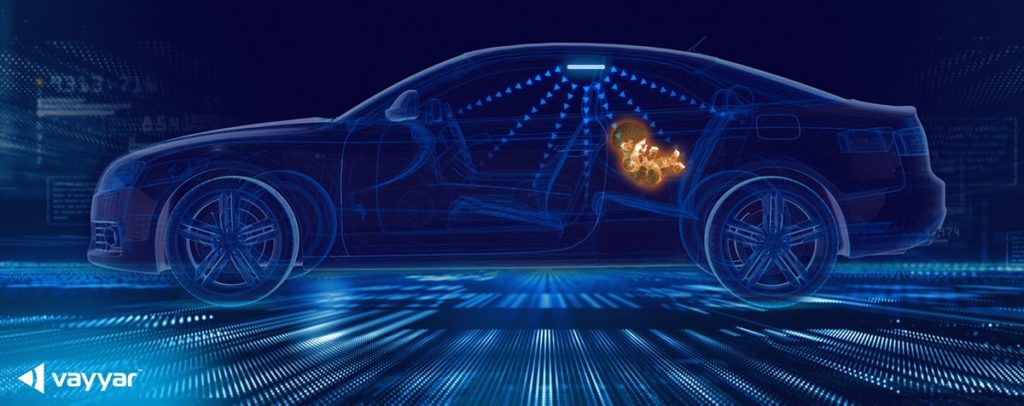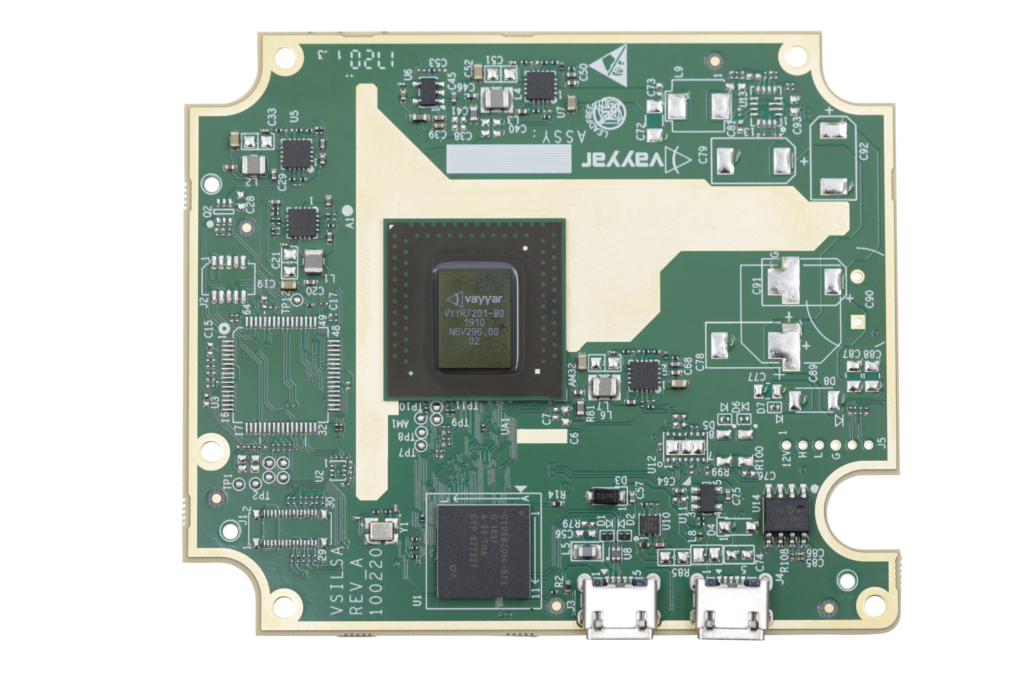Occupant monitoring offers tremendous safety benefits for today’s vehicles and the promise of numerous applications in an increasingly autonomous future. From detecting driver fatigue levels to alerting parents of a forgotten baby in the back seat, the near-term use cases are numerous. The pressure is growing on automakers to include these systems as standard, and for suppliers, there’s big business potential ahead.
Spotlight on Vayyar
Israeli company Vayyar is positioning itself to ride the expected wave of demand. Its advanced 4D imaging radar technology was originally designed for the medical sector, where radio-wave based sensors provide breast cancer scanning. The same basic technology is now gaining traction in the automotive segment, both for in-cabin monitoring and advanced driver assistance systems (ADAS).
For in-cabin monitoring, the 3D imaging system draws on about 40 antennas that transmit and receive across a wide field of view—almost 180 degrees on each axis. That allows it to cover both the front and second rows in the vehicle at the same time, and to create high-resolution images. “Basically, we can build very small three-dimensional pixels,” says Ian Podkamien, Vayyar’s Head of Automotive.
The formal name is voxel, a volume pixel. The system can detect objects and people inside the cabin, distinguishing between children and adults. It constructs a fully filtered and analysed 3D image of the cabin, made up of small voxels that signify the targets it has detected. This sort of information can be applied to various life-saving use cases.

In-cabin applications
One of these use cases comes in the form of Child Presence Detection. In the US last year, more than 50 children died when they were left in hot cars. Safety advocates believe technology that detects children left alone in a vehicle, and alerts drivers to their presence, could prevent many of these deaths. But these systems only work if they can effectively distinguish between a child and an adult. Too many false positives will eventually annoy the driver, and the system will end up being ignored or disengaged. “The way to prevent false alarms is to distinguish between adults and infants,” says Podkamien.
The same single-chip sensor used for Child Presence Detection also facilitates accurate seat belt reminders. In this case, the system can differentiate between a person and a heavy object, eliminating false seat belt alerts. It can also recognise three passengers in the back seat, enabling seat belt reminders for two full vehicle rows.
These technologies aren’t just nice to have—they are required, or soon will be. Automakers now face a mandate in key markets, including the US and Europe, for seat belt reminders in the second row. The proposed Moving Forward Act of 2019 in the US would require automakers to install child presence detection capabilities, while Euro NCAP is also putting a greater emphasis on occupant monitoring and Child Presence Detection in its overall ratings.
There are plenty of other life-saving applications as well. Every year car owners suffer carbon monoxide poisoning after failing to turn off the ignition on keyless vehicles. Vayyar’s sensor can help detect that the car is stopped but that nobody is inside. It can also assist with post-collision reporting to emergency services, monitoring the number of occupants inside a vehicle and their vital signs.

The edge
While automotive sensors are nothing new, Vayyar believes it has a real edge in the segment. “The industry is well aware of radars, but the ones traditionally used have a narrow field of view and are limited to one or two applications,” Podkamien suggests. “We bring a wide field of view, long and short ranges, and true multifunction.”
A real cost advantage comes from Vayyar’s ability to provide a combination of child presence detection and a seat belt reminder on a single chip. In a cost-driven industry like automotive, the benefits of this approach can’t be overlooked. “The alternative is that the Tier 1 or automaker buys two different sensors, two different types of solutions, which represents a heavy investment,” adds Podkamien. “We also provide access to a high-performance 4D imaging radar platform, which will allow them to develop additional features down the line. This approach not only saves the direct cost of the sensor itself, but also saves on wiring, connectors, engineering efforts, validation, and so on.”

These cost savings also mean that the technology, and its safety benefits, need not be limited to higher end models. Vayyar estimates the solution cost in the “tens of dollars”, making it suitable for entry level ranges. “Electronic systems are accounting for a much greater percentage of overall vehicle costs these days,” Podkamien points out. “With the increased level of safety requirements and the general need for rich data required to make crucial decisions, there is a real necessity to have smarter sensors that are able to provide a lot of information for multiple applications. We have to start minimising this trend of piling expenses; otherwise it will not be sustainable. Even sophisticated technologies need to be scalable.”
Up next
Vayyar is currently in the process of getting into production with several partners and expects that its technology could appear on the road by 2022. But that’s not the limit to its outlook. As the industry shifts towards an increasingly automated future, a wide range of new applications will emerge. In robotaxis operations, it could monitor occupant capacity in the absence of a human driver and provide insights for fleets to optimise routing. In shared mobility scenarios, the tech could issue alerts when a passenger leaves behind a bag or phone. It also helps with perception outside the vehicle such as intruder alerts, object detection and trajectory mapping.
The biggest challenge for Vayyar hasn’t been so much about perfecting its technology or lowering the cost, but rather educating the industry. “We have a product that is sophisticated and yet robust, innovative and yet mature, high-end and yet affordable,” says Podkamien. “These are contradictions in the industry and we are changing several paradigms with our ultra-integrated solution. The good news is that there are enough believers out there and we have partners that have been running with us for a good number of years.”
